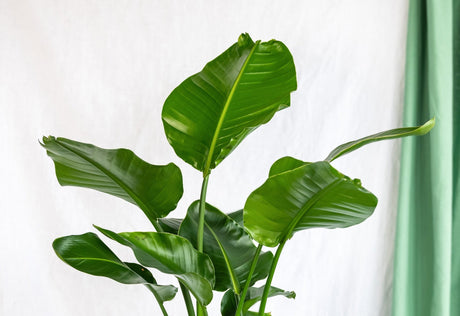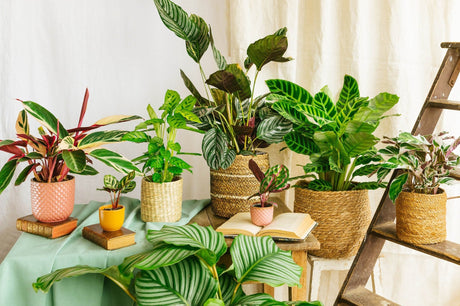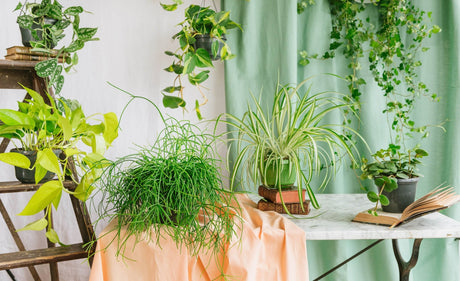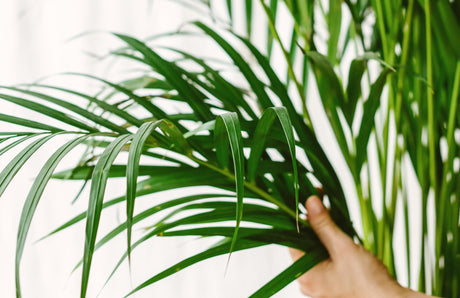Do you feel that your indoor plants are not in great shape?
When growing conditions are not optimal or appropriate, your plant is weakened and will therefore be more susceptible to disease and pest attacks. The leaves turn yellow, the flowers fall or small insects settle? If your plants are giving you abnormal signals, they probably have a disease. It is important to identify the diseases beforehand in order to be able to provide them with the appropriate care. The disease of a plant is an abnormal sign (lack of light, heat, fertilization, falling leaves, different color ...) that your plant sends back to you, due to different cultures that are not adapted to them, this may be due to the irrigation, exposure… many factors are possible. In this article you will find the most common diseases and problems in houseplants and how to manage to save your plants.
Identifying the problem
When a concern is detected (loss of leaves, yellowing, soft leaves, etc.) it is important to succeed in understanding and identifying the problem or the disease that she encounters in order to intervene effectively and quickly.
Why is my plant losing its leaves?
If you observe that many green, non-yellowing leaves fall quickly, this is due to insufficient air humidity or irregular watering.
To remedy this, increase the humidity of the air around the pot, for example by adding clay pebbles or damp gravel to the bottom of the pot, then spray the foliage of the plant. Then take care of more regular waterings but without excess by preferring the technique of basining.
On the other hand, if the leaves turn yellow and then fall, this is a sign of irregular watering, a lack of fertilizer or light, or an atmosphere that is too dry.
To remedy this, check that the growing conditions correspond to the needs of the plant, increase the humidity of the air, which is often insufficient in winter.
Why are my plant's leaves turning yellow?
The leaves turn pale and yellow but the veins remain very green, growth seems to be slowing down, this is a sign of an iron deficiency due to a growing medium with too high a lime content.
Repot the plant in a suitable potting soil (often for green plants) and use a fertilizer enriched with trace elements.
The leaves dry up, become thin and then die, this is a sign of too dry, sometimes polluted air. It is necessary to increase the humidity of the air by grouping the
If growth is slow and the foliage is discolored or dull, the soil is depleted and linked to a lack of fertiliser. In this case, repot your plant in quality soil then add the fertilizer one month later first diluted by half during the growth period (spring).
Why are my plant's leaves soft?
The foliage droops and then takes on a withered appearance, your plant tells you that it needs to be watered. For the foliage to come back to life, use the soaking technique which consists of plunging the base of the pot into a basin or a large tub of water (preferably non-calcareous or rainwater) to rehydrate the soil and then let it drain. In the case of an excess of watering it is necessary to empty the saucer and to supervise the plant to perhaps repot it.
If your leaves are deformed and take on a wavy to crimped appearance, the temperature is too low and the fertilizer is not suitable for the plant's needs.
Why are my plant's leaves turning black?
If you see foliage turning yellow at the tips and edges of the leaves and then turning brown, it's due to too dry air or overwatering. If you have watered your plant too much, there may be stagnant humidity in this case you must empty the saucer or the
1.Parasites
- spider mites are colorful mites or microscopic red spiders. To get rid of it, water your plants regularly, spray the leaves with soapy water.
Mealybugs, there are 2 types:
- Mealybugs produce a whitish substance that can be seen on the leaves of indoor plants. The leaves affected by mealybugs will die but we can still treat our plants in a natural way by diluting in a liter of water, a teaspoon of black soap, vegetable oil and alcohol at 90°. . Spray this mixture once a day for 4 days.
- Shield mealybugs produce small black spots scattered on the leaves of plants.To cure your plants of this disease, apply a copper-based mixture of sulfur (Bordeaux mixture), alcohol and water.
- Gnats are small flies of 1 to 2 millimeters. They live on the surface of
2.Powdery mildew: This disease is caused by insufficient watering and lack of air, it is characterized by whitish spots on the leaves, and it usually occurs in May during dry weather. In this case, remove the parts attacked by this white deposit using a clean cloth, and adjust your watering as well as the ventilation of your room.
3.Mildew: Do you see brown spots on the leaves of your plants with mold, like a white fuzz, on them? It is imperative that you remove the affected leaves with a clean cloth and no longer spray or mist them. You can also add garlic decoction to fight mildew.
Other signs that may be a disease:
4.Root Rot: Drought or over-watering your plant can cause root rot. At first, your roots blacken, eventually rotting completely. In this case, there is unfortunately no other solution than to throw away the contaminated plant.
5.Appearance of black spots: You notice black and yellow spots on your foliage. Sometimes a few of your leaves break off and fall off. In this case, you will need to remove the stained sheets immediately to leave only those in good condition. Your room must lack ventilation, so remember to open your window from time to time to circulate more air.
Products available in supermarkets to care for your plants
Chemical companies have come up with pest control combinations that make life much easier for indoor gardeners. You can find it in supermarkets in the "garden" section, but home remedies are also possible and just as effective as explained above. We all have certain ingredients or products in our cupboards so let's avoid overconsumption and give them a second life for the greatest pleasure of our plants.
How to prevent your plants from getting sick? Watering, exposure, maintenance
First advice and probably the most important is to constantly monitor your plants and especially the signs they can give us, especially during the first weeks because they can take some time to get used to their new environment. . This involves carefully inspecting the foliage and the young shoots, the underside of the leaves, also checking the humidity of the soil and the absence of stagnant water in the saucer or the
2) Choose plants adapted to the place where you want to install it. It will then resist the climate and the light.
3) Water the plants properly, i.e. by foot without wetting the leaves and stems. This will keep the leaves healthy.
4) Finally, a little tip: feed the soil of your plants with a fertilizer to ensure the good growth of your plants.
5) Do not forget to bring them fertilizer in the spring, the best time for their growth and development.
6) Cut off damaged leaves colonized by pests to stop the spread. Preferably isolate the plant to limit the risk of contamination with others. Treat only as a last resort!
How to apply the treatments to care for your plants?
- Preferably treat in the morning or evening, to avoid the risk of sunburn, especially in summer.
- With an aerosol can, maintain and respect a minimum distance of 30 to 40 cm between the can and the plant.
- Apply the treatment with emphasis at the intersection of the branchesand in the folds of the leaves for more efficiency
- Treatments contain toxic substances, store them out of reach of children and pets!






